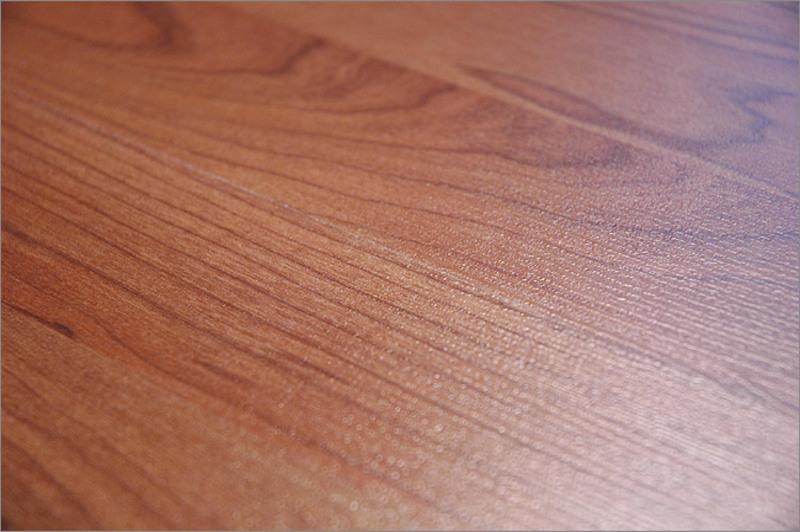Having the skill when it comes to how to fix water damaged vinyl flooring in bathroom is almost as significant as anything else as a homeowner. Vinyl is a popular material commonly used as an alternative to porcelain and hardwood floors in bathrooms.
It does not absorb too much moisture and is relatively easy to maintain, making it perhaps the best flooring option. However, vinyl cannot always prevent water damage.

There are several cases of bathroom flooring problems that concern this particular material. Today, we will discuss how to recognize water damage in vinyl and what you can do to fix it.
Can Water Damage Vinyl Flooring
Most vinyl, especially the more luxury ones, are completely waterproof and can withstand an excessive amount of moisture. They are meant to be used in areas where there is a water source and are constantly damp.
The material can resist water, but if it is installed over concrete, the problem can emerge when moisture makes its way to the foundation. On humid days, it can also sweat, which can trigger chemical reactions and create high levels of alkali that can damage vinyl in the long run.
Before installing vinyl, moisture testing is a necessary process. It is also essential for moist rooms such as bathrooms, kitchens, and laundry areas to have the seams and the floor’s perimeter well sealed. This is to prevent water from creeping into the subfloor and eventually damaging the vinyl.
What Happens When Water Gets Under The Bathroom Floor
It is generally all right for vinyl flooring to get wet as they are water-resistant. They can be cleaned easily by only wiping the surface where there are spills.
Water damage is not that common with this material. However, if there is, then it is mainly related to the concrete underneath. Standing water can be dangerous due to several reasons:
Short circuit
If wires are located on the subfloor, water contact can trigger a short circuit that could cause a fire. It can also electrocute a person upon slight touch. If you believe that this could be a case on your bathroom floor, call an expert electrician to fix the issue as soon as possible.
Mold
Mold grows wherever there is enough moisture in the environment. This can be toxic for people with respiratory problems and allergies.
Getting rid of mold growth itself is not covered by most homeowners insurance. Insurance companies will only include it in the insurance coverage related to a disaster the providers recognize, such as flooding, storm, and so on.
Mold can also creep into the drywall and trigger rotting, which is a bigger problem if not addressed immediately. If you are only renting and you notice molds within the property, you can sue your landlords with a mold lawsuit. Consult your lawyer if you want to learn more about this.
How To Recognize Water Damage On Vinyl Flooring
It is relatively easy to spot signs of water damage on vinyl flooring. If you happen to spot any of these, it would be best to act quickly and take the necessary measures to relieve the situation. The characteristics of water damage in vinyl flooring are:
- Degrading adhesive
- Opening seams
- Discoloration
- Bubbling
Fixing Water Damaged Vinyl Flooring
To fix vinyl bathroom flooring recently damaged by water, here are the things that you can do.
Step #1. Turn off the main valve to avoid any possibility of further water exposure to the damaged flooring.
Step #2. Be sure to wear proper attire before starting to work in the area. This includes a dust mask, leather gloves, and eye protection.
Step #3. Remove the items that can go in the way while working, such as anything on shelves, cabinets, damaged floors, and more.
Step #4. Remove the vinyl planks you wish to replace. Also, remove the protruding nails on the baseboard only on the area concerned. If the whole room is affected by water damage, you will need to remove the entire flooring.
Step #5. If the area is still damp, give it time until it is completely dry. You can use a vacuum and dehumidifier to speed up the drying process. Make sure that the room is with proper ventilation by leaving the door and the windows open.
Step #6. Check if the joists are also affected as well as the hardware. You can also check for the signs of mold, rotting, and other problems that are not always visible to the surface.
Step #7. After securing the area from water damage, you can now start placing new vinyl planks into the flooring. Ensure that the possible causes of water damage such as leaking pipes, plumbing, and more are resolved.
Step #8. In case of mold, remove the infection first before fixing your bathroom floors. You can use home mixtures of vinegar, bleach, and water to treat it. You can also call for a professional to help you fix the problem.
Conclusion
Knowing how to fix water damaged vinyl flooring in bathroom can always come in handy. After all, it is far more accessible in comparison to other materials. Hiring an expert can also cost you more, but you can still do so if you have extra bucks.
To avoid being in the same situation, make sure to always check your floors for water damage. Watch out for the early signs and act quickly to prevent a more severe and costly repair.
